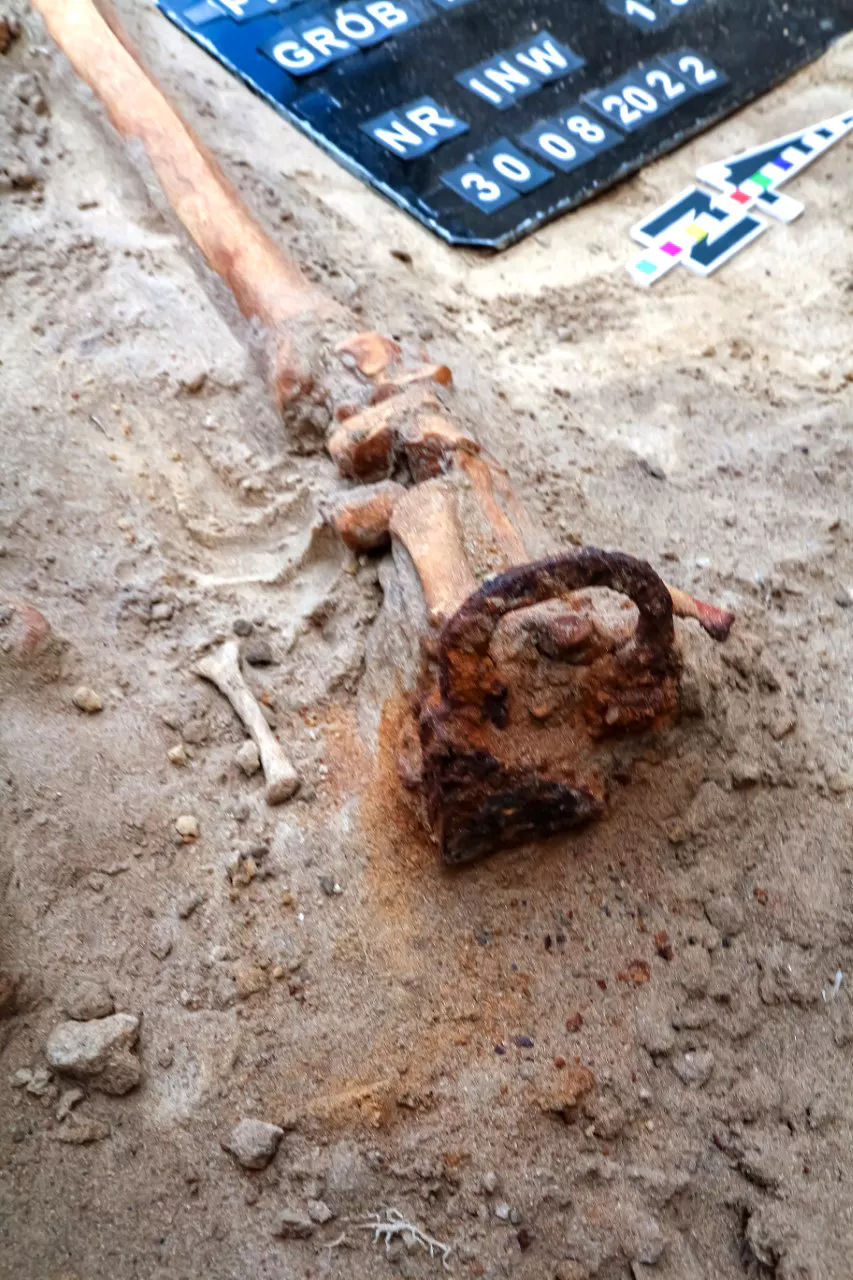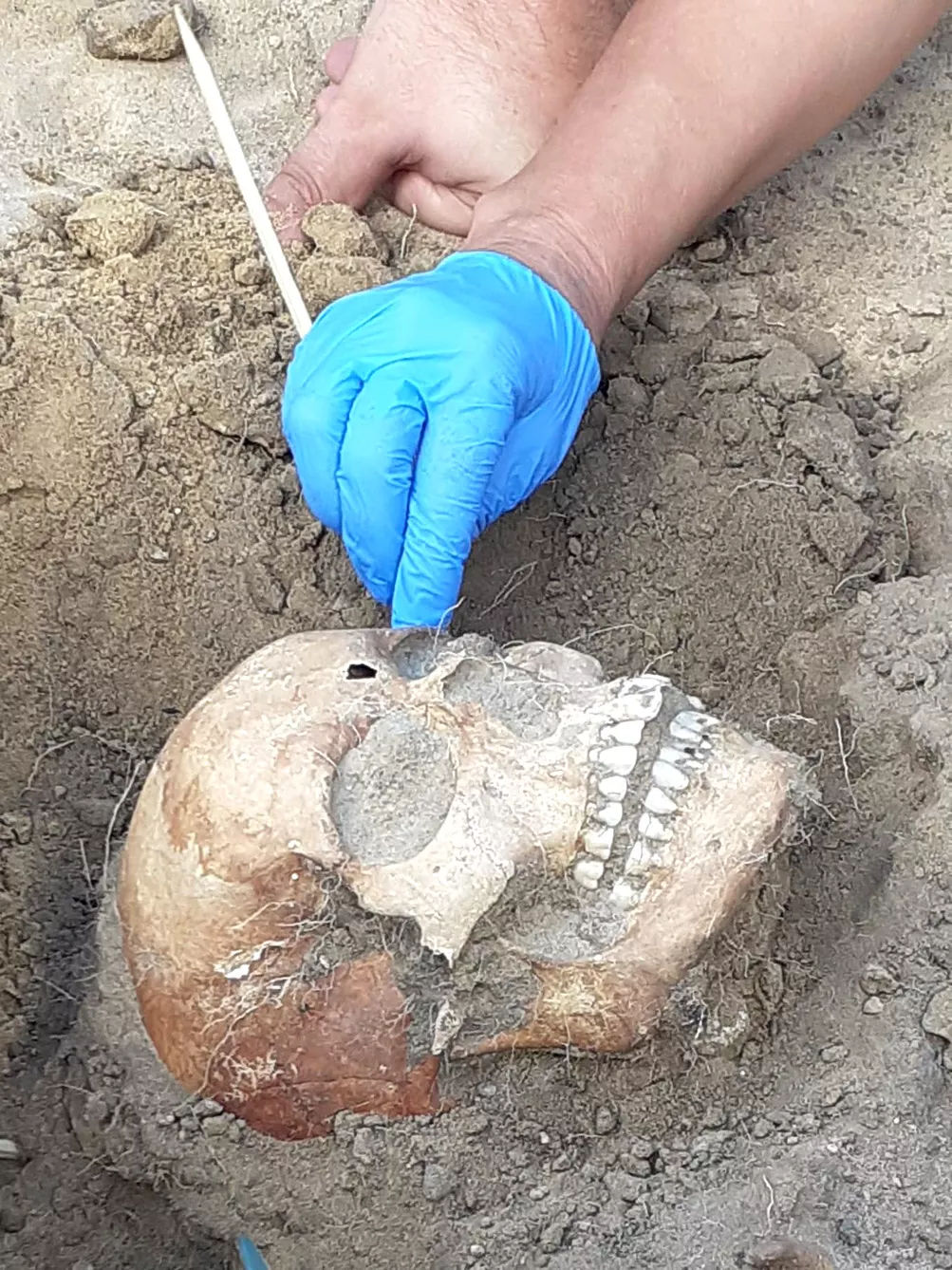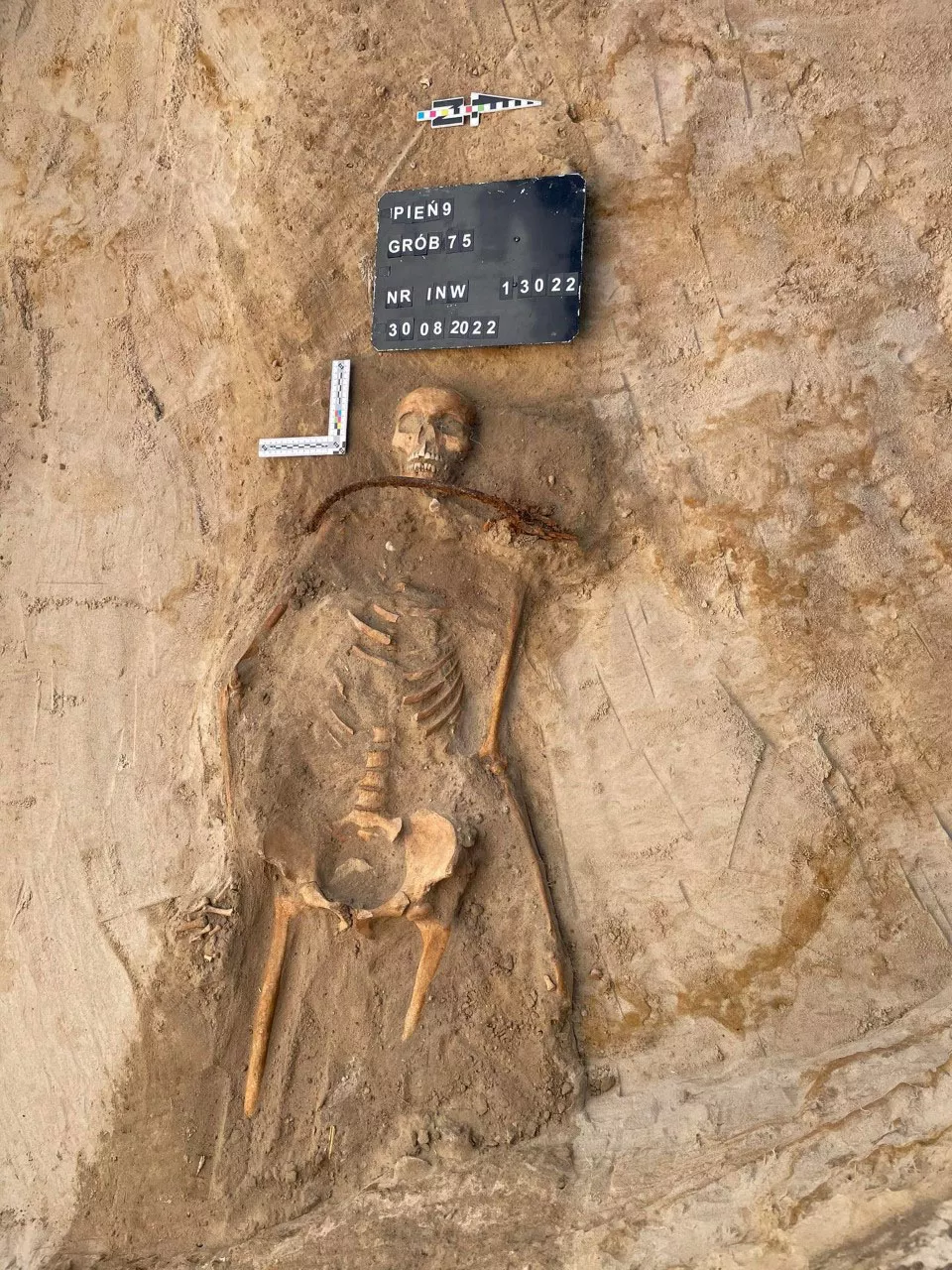A recent announcement from archeologists at Nicholas Copernicus University in Toruń about a newfound 17th-century woman’s corpse in Pień near Bydgoszcz, in northern Poland, made headlines countrywide and internationally. What is specific about this burial was the unusual paraphernalia. Most notably, the woman had a sickle near her body.
A likely candidate for a wraith
And make no mistake, this wasn’t just her tool of trade. The sickle was placed around her neck, blade-down, so that, in case she was to rise from the grave, her head would have been chopped off. In addition, a padlock was “locked” around her toe, as if the gravedigger wanted to magically forbid her from taking a step (just in case she missed the first trap).
She was, therefore, considered a likely candidate for joining the ranks of the undead – either accused of some unnatural deed before her death or because she was just a good candidate for becoming one. Perhaps it had to do with the special circumstances of her death, or maybe it was more to do with who she was during her earthly existence. It’s all just a guess, but an educated one – given that we know the phenomenon exists and that this is not the only burial of its kind in Central Europe – just not this far north.





Yet, she wasn’t a vampire, as the media have dubbed her. That’s because vampires didn’t exist in Poland. The country’s rich demonology doesn’t include any version of Count Dracula or Orlok or Vlad the Impaler. Let’s call her a wraith, for the lack of a better word.
Slavic folklore has provided fertile grounds for belief in the paranormal. You don’t even have to take our word for it. Just look at Poland’s Andrzej Sapkowski, who created a veritable wonderland of supernatural machinations in his “The Witcher” series, parts of which were unquestionably inspired by local ghost stories.
Why not a female vampire?
Back to our vampire. In truth, she could not have been such a creature simply because vampires, as in the Transylvanian demonic creatures, are not, to our knowledge, part of the Northern Slavic repertoire. So she really can’t be associated with Dracula, Elizabeth Batory, or any other undead countess, princess, or queen. This “female vampire” might have been of aristocratic origin, though, as evidenced by the expensive silk cap that she was buried in.
As underlined by Polish historian Łukasz Kozak in his 2021 book “Upiór. Historia Naturalna” (“The Upiór. A Natural History”), the idea of modern vampires, both male and female, with their Satanic pact against the Christian God, and exploiting peasants, passing their curse of immortality to them is a quite recent addition to our demonic Imaginarium.
Romantic creatures of the night
This idea was only conceived in the early 19th century, with English poet John William Polidori’s eponymous “Vampyre,” which was written in 1819 in a friendly contest between writers – friends of poet Lord George Byron. (*By no coincidence, the same contest also produced Mary Shelley’s “Frankenstein,” giving birth to modern science fiction.)
Polidori, who had recently broken up with (or been dumped by) his lover Lord Byron, depicted a new type of ghost in his poem. The main character was aristocratic and packed with superpowers that, while elevated and cruel – (well, that is, if brilliance and poetic talent count as superpowers) – all directly related to his former boyfriend.
So yes, as far as the modern term “energy vampire” is concerned, Byron was the original. The story of Dracula by Bram Stoker followed in 1897, and the pop cultural persona of the vampire foreshadowed the original Slavic demonology.
While the recent discovery of the “female vampire” near Bydgoszcz is a fascinating find, it is more the perfect opportunity to get to know original Slavic demonology better so that we can tell real-life wraiths from vampire fiction.







